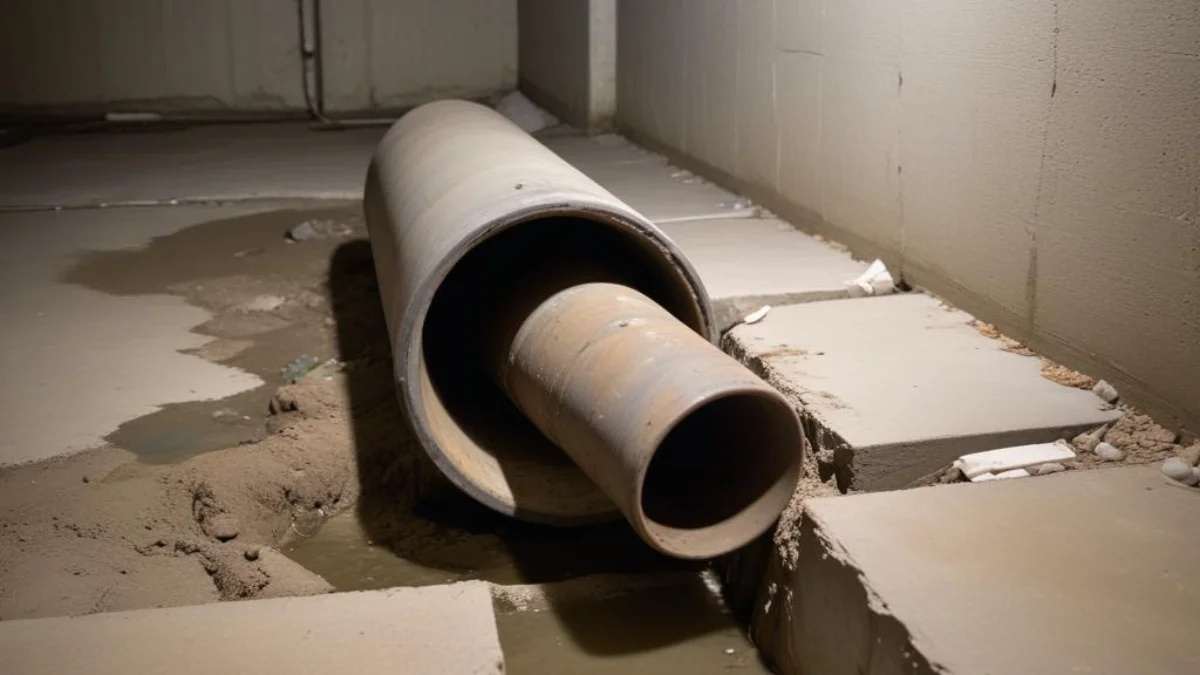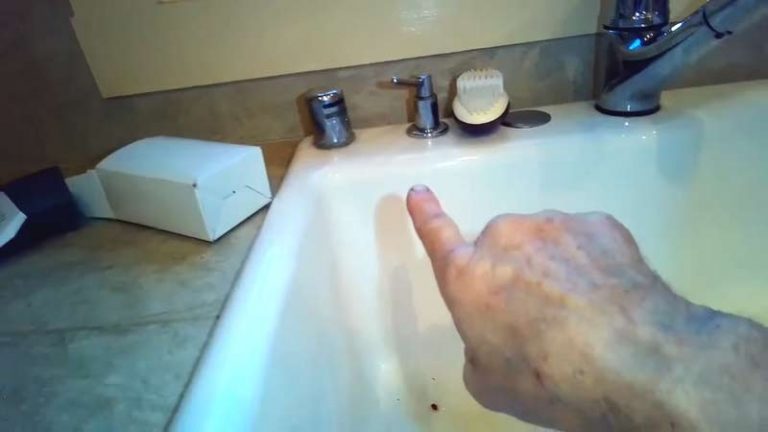Why an Open Sewer Pipe in Your Basement is a Serious Issue?
Discovering an open sewer pipe in your basement can be alarming. That unmistakable, foul odor is often the first sign that something is seriously wrong. This isn’t just an unpleasant smell; it’s a direct line for hazardous sewer gases to enter your living space, posing significant health and safety risks to you and your family.
Many homeowners stumble upon this issue during renovations, after noticing a persistent smell, or worse, after a sewage backup. Whether it’s a forgotten pipe from a previous remodel or an uncapped cleanout, the dangers are the same. Immediate action is not just recommended; it’s essential.
You'll Learn About
The Hidden Dangers Lurking in Your Basement
An open sewer pipe is far more than a source of bad odors. It’s an invitation for a host of problems that can affect your health, your home’s structure, and even your safety. Understanding these risks is the first step toward resolving the issue permanently.
Health Risks: More Than Just a Bad Smell
Sewer gas is a complex mixture of toxic and non-toxic gases produced from the decomposition of household waste. The most prominent and dangerous components include hydrogen sulfide, methane, and ammonia.
Exposure to even low levels of these gases can cause a range of health issues. Symptoms often start with headaches, dizziness, nausea, and irritation of the eyes and respiratory system. For individuals with pre-existing conditions like asthma, these effects can be magnified.
Prolonged exposure to higher concentrations of sewer gas can lead to more severe health consequences. Hydrogen sulfide poisoning is a serious risk, and methane can displace oxygen in enclosed spaces like a basement, potentially leading to asphyxiation. These gases are a silent threat that should never be ignored.

Explosion and Fire Hazards
One of the most immediate dangers of an open sewer line is the risk of fire or explosion. Methane, a primary component of sewer gas, is highly flammable. If it accumulates in a poorly ventilated basement, a simple spark from a water heater, furnace, or electrical appliance could lead to a catastrophic event.
This is not a theoretical risk; it’s a genuine danger that puts your entire home and everyone in it at risk. The enclosed nature of a basement makes it the perfect environment for these explosive gases to collect to dangerous levels.
Pest Infestations and Water Damage
An uncapped sewer pipe is an open doorway for pests. Rodents and insects that thrive in sewer systems can easily find their way into your home through this opening, bringing with them diseases and creating a new set of problems.
Furthermore, in the event of a clog or backup in the main sewer line, an open pipe in the basement is the path of least resistance. This means raw sewage could flood your basement, causing extensive and costly water damage, promoting mold growth, and creating a serious biohazard.
Identifying the Problem: Finding the Source
Before you can fix the problem, you need to identify the open pipe. Sometimes it’s obvious, but other times it can be hidden or mistaken for something else. Most sewer pipes in homes are made from cast iron in older homes, or PVC or ABS plastic in newer constructions.
Common Locations for Open Sewer Pipes
Look for pipes sticking out of the floor or wall that are not connected to any fixtures. These are often found near planned or removed fixtures, such as a basement bathroom rough-in that was never completed.
Another common culprit is a sewer cleanout. A cleanout is a capped pipe that provides access to the sewer line for cleaning. If this cap is missing, broken, or improperly sealed, it will allow sewer gas to escape.
What to Look For
Start by following your main plumbing lines. All drains in your house connect to a larger, central pipe that exits your home. Look for any unconnected branches or openings along this line.
The pipe will likely be 3 to 4 inches in diameter, though smaller drain lines can also be a source of odors if left open. If you have any doubts, a professional plumber can perform a smoke test to pinpoint the exact location of the leak.
Step-by-Step Solutions: How to Seal an Open Sewer Pipe
Once you’ve located the open pipe, sealing it is a top priority. Depending on your comfort level with DIY projects and the type of pipe, you may be able to handle this yourself. However, when in doubt, always call a licensed plumber.
Temporary Fixes (Use with Caution)
For an immediate, short-term solution to stop the flow of gases, you can use a temporary plug. A rubber test plug or a mechanical gripper plug can be inserted into the opening and tightened to create a seal.
Another very temporary measure involves stuffing a garbage bag into the pipe. While this can reduce the smell for a short time, it is not a secure or reliable solution and should only be used while you acquire the proper materials for a permanent fix.
Permanent Capping: The Right Way
The correct way to seal an open sewer pipe is with a permanent cap designed for your pipe’s material and size. This ensures a durable, airtight seal that prevents gases and water from escaping.
For PVC or ABS plastic pipes, a solvent-weld cap is the best solution. You will need the appropriate primer and cement for the specific type of plastic. For cast iron pipes, a flexible rubber cap (often called a Fernco cap) secured with a stainless steel band clamp is a common and effective method.
| Pipe Material | Recommended Cap Type | Tools & Materials Needed |
|---|---|---|
| PVC (White Plastic) | PVC Solvent-Weld Cap | PVC Primer, PVC Cement, Rag, Pipe Cutter/Saw |
| ABS (Black Plastic) | ABS Solvent-Weld Cap | ABS Cement, Rag, Pipe Cutter/Saw |
| Cast Iron | Flexible Rubber Cap with Clamps | Nut Driver or Screwdriver |
| Threaded Pipe | Threaded Plug (Metal or Plastic) | Pipe Wrench, Thread Sealant Tape |
When to Call a Professional Plumber
While capping a simple, accessible pipe can be a DIY task, many situations require professional expertise. If the pipe is damaged, located in a hard-to-reach area, or if you’re unsure of its purpose, it’s best to call a plumber.
A professional can not only ensure the pipe is capped correctly but can also inspect your entire drainage system for underlying issues. They might recommend a camera inspection to check for clogs or damage further down the line that could be causing pressure to build up. Tackling complex plumbing without the right tools, such as reaching a high spot on your property which might require expertise on how to get on second story roof, can be risky.
The cost of hiring a plumber can range from a couple of hundred dollars for a simple capping to much more if significant repairs are needed. However, this cost is minimal compared to the potential costs of health issues, property damage from a backup, or a fire.
Preventing Future Problems
Once the immediate issue is resolved, take steps to prevent it from happening again. Regularly inspect your basement for any signs of plumbing leaks or unusual odors. Ensure all drain traps, including floor drains, have water in them by pouring a pitcher of water down them every few months.
If you have appliances that can malfunction, like a heater that keeps shutting off, it’s a sign to investigate further. A problem like a mr heater big maxx short cycling could indicate ventilation issues that might also be affecting your plumbing vents. Keeping your home systems in good working order, including regular maintenance like gutter cleaning which you can even do with DIY tools—check out our guide on how to make a gutter cleaner out of pvc pipe—contributes to overall home safety.
An open sewer pipe in the basement is a serious issue that demands immediate attention. By understanding the risks and taking prompt, appropriate action, you can protect your home and family from the dangers of sewer gas, pests, and potential backups. Don’t delay—seal that pipe and restore the safety and comfort of your home.

